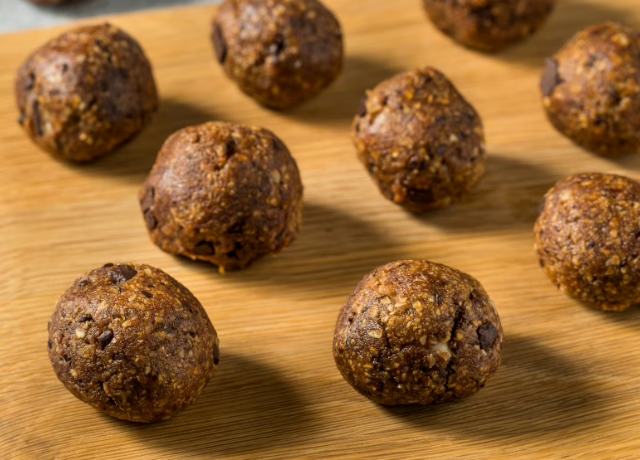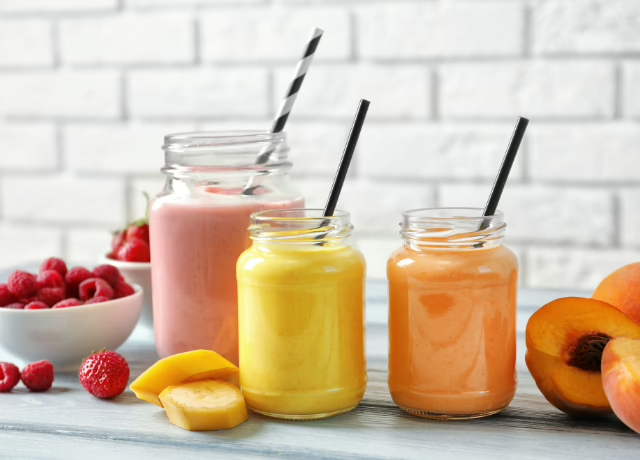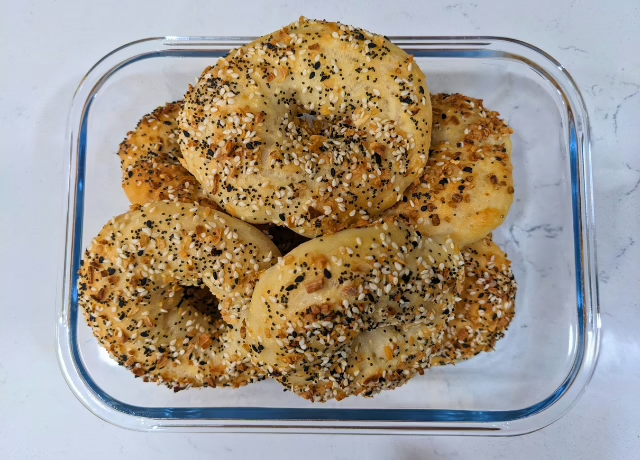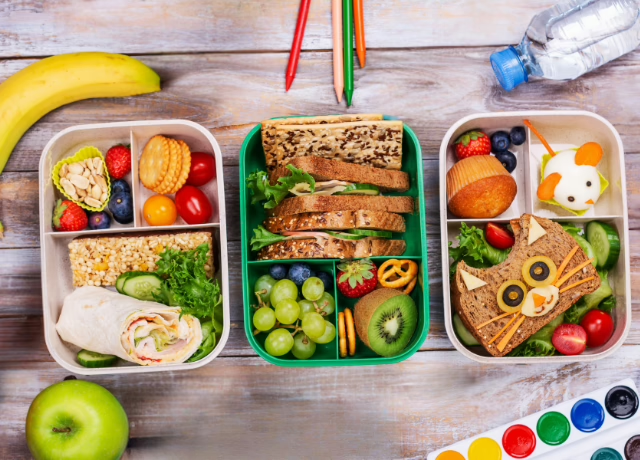Where has summer gone? It’s hard to believe it is already time to go back to school, but in the spirit of making your transition easier, today I am sharing seven snack ideas to help you feel inspired for the upcoming school year.
All of these are balanced recipes with carbohydrates, protein and fat to help your kiddos have energy and stay satiated until the next mealtime.
OPTION 1: A Twist on Apples and Nut Butter
Apples with peanut butter, or your nut butter of choice, is a classic for a reason: it’s quick, easy and healthy.
Apples have natural sugar, or carbohydrates, to give us energy. Their skin has fiber to keep you both satiated and improve gut health for nutrient absorption and immune function, which as we know is extra important for the upcoming school year and cold season!
Nut butter contains healthy fats and a little bit of protein, which takes longer to digest, helping with satiation.
When paired together, blood sugar is stabilized. This prevents the “sugar crash” which can help a child have sustained energy, improved mood, and increased focus.
Core the apple and cut it into typical wedges or try cutting horizontal flat slices for younger children to take easier bites.
If you want to add in extra protein, try mixing together equal parts, 1-2 tbsp, serving of Greek yogurt and peanut butter.
For a touch of fun, add cinnamon, mini chocolate chips or your favorite sprinkles.
OPTION 2: Homemade Energy Balls
You have probably seen these everywhere by now and that’s because they are a balanced snack that provides fiber, healthy fats and a little bit of protein. As a snack, this helps to keep us fuller for longer.
The addition of flax seeds to this version adds a specific type of healthy polyunsaturated fat called Alpha-Linolenic Acid (ALA). This is a type of essential omega-3 fatty acid that can decrease inflammation and promote brain health.
The term “essential” in this instance means we must get this nutrient from our diet because our body does not produce it.
Flax seeds are actually one of the best plant sources of omega-3s. It is important to use ground flax seeds instead of whole because this form increases the body’s ability to absorb and utilize its nutrients.
A tried and true recipe is:

- ⅔ cup creamy peanut butter (or nut/seed butter of choice)
- 1 cup old fashioned oats
- ½ cup mini chocolate chips of choice
- ½ cup ground flax seeds
- 2 tbsp honey or sweetened to your liking
Mix well and chill in the fridge for 30 minutes before rolling them into balls. If they aren’t sticking well together, add more peanut butter, honey, or maple syrup.
Return the balls to the refrigerator or freezer for storage.
Feel free to play around with different flavors, like freeze-dried strawberries with mini chocolate chips or freeze-dried apples with cinnamon. Try adding other mix-ins like chia or hemp seeds for extra fiber, protein and healthy fats.
OPTION 3: Hummus with Crackers or Veggie Sticks
The trend continues with this snack that is filled with fiber, healthy fats and a little bit of protein to provide a satiating and nutritious snack. Adding vegetable dippers introduces a greater variety of vitamins and minerals into the diet.
You can always buy your hummus, but you’d be surprised how easy it is to make at home.
It is a fun way to experiment with new flavors, herbs and spices. A personal favorite is lime with taco seasoning.
Using a food processor, combine:
- 1 lemon, juiced OR 2 limes if trying my favorite
- ¼ cup of tahini
- ½ a medium onion (option to roast it first for more flavor)
- 1 clove of garlic, minced (option to roast 2-3 cloves of garlic instead)
- 2 tbsp extra virgin olive oil
- 1 can of chick peas, drained and rinsed
- ½ ground cumin
- ½ tsp salt
If trying my favorite taco seasoning version, add:
- 1 tsp chili powder
- ½ tsp paprika
- ¼ tsp oregano
- ¼ tsp black pepper.
If wanting to use a premade packet, omit salt from the base recipe if your mix already contains sodium.
Fresh herbs are a total game changer in hummus. For my favorite taco version, I mix in a handful of chopped cilantro at the end. This is a simple way to add more vitamins and minerals to the dip, especially if using crackers, chips or pita for dipping.
Optional: For an extra nutty flavor toast ½-1 tbsp of sesame seeds over medium heat on the stovetop, plus this provides additional healthy fats and minerals.
If you notice you need more liquid to combine, I will provide two options.
- If your child is struggling with adequate calorie intake, add more oil, 1 tbsp at a time until combined.
- If you are wanting a lower calorie option, add 1 tbsp of cold water at a time until it reaches your preferred consistency.
OPTION 4: Smoothies!
Fruits and vegetables are packed with vitamins and minerals. I suggest adding vegetables and seeds to smoothies for added fiber, healthy fat and protein to prevent the blood sugar spike that could happen if it only contained fruit.
You can make a big batch ahead of time to keep in the fridge for 1-2 days, or freeze pre-made bags to quickly blend and serve.
Here is a flexible outline you can follow to make 64 oz of smoothie:

- Fruits of choice: ½ banana, ½-1 cup of berries, ¼-½ cup tropical fruit, 1 apple, etc. (fresh or frozen)
- Vegetables: 1 big carrots or 6 baby carrots, 1-2 stalks of celery, ¼ of a normal cucumber or 1 baby cucumber, 1 handful spinach, and/or kale are my personal favorites
- 1-2 tbsp of: Ground flax seeds, hemp seeds and/or chia seeds for extra fiber and healthy fats. It is important to note that flax seeds and chia seeds absorb water, so add extra water if choosing to add those.
- Liquid: milk of choice or water. This amount will vary depending on the consistency you prefer. I prefer a thin smoothie so I add water well above the contents in my smoothie. This is also a way to increase hydration throughout the day.
For extra nutrients and flavor, I often add fresh ginger, turmeric, black pepper and/or cardamom to smoothies. This could be a fun way to see if your kiddo enjoys a new flavor while adding a little variety to their diet.
If you are wanting to add more protein to the smoothie, add a scoop of your favorite protein powder or a ½-¾ cup of Greek yogurt or kefir!
The best part about smoothies is that you don’t have to stress over perfect ingredients and exact measurements each time as long as you strive for a balance of fiber, protein and healthy fats.
Choose from what you have on hand or what your family prefers.
OPTION 5: Yogurt with Fruit
Yogurt contains probiotics that are beneficial for gut health. It also has protein and sometimes fat that when combined with the natural sugar and fiber in fruit, is a great satiating snack.
The yogurt and fruit could stay separated if that is how it is accepted most by your child, but it can also be cut up and added to ~½ cup of yogurt.
If your kiddo does not enjoy the texture of yogurt, try blending the yogurt and fruit with your preferred milk to turn it into a drinkable form.
You can also try big slices of fruit and use the greek yogurt as a dip.
Point to note: Some yogurts can have a significant amount of added sugar.
To reduce this I suggest you start with plain yogurt and lightly sweeten it yourself with honey, maple syrup or sugar. Add extracts like vanilla or spices like cinnamon to add flavor without extra sugar.
OPTION 6: Protein-packed Mini Bagels
Toasted mini bagel topped with cream cheese or cottage cheese, plus slices of cucumber and a sprinkle of your favorite salt seasoning or everything bagel seasoning.
The bagel is the carbohydrate for energy, cream cheese contains fat or cottage cheese for fat and protein to help with satiation, and the cucumber for additional vitamins and minerals.
This was my personal favorite as a kid!
I enjoy making my own simple “bagels” at home. This recipe uses greek yogurt in the dough to add even more protein to the base of the snack.

Recipe for Homemade Bagel Dough
- Preheat the oven to 375 degrees.
- Combine the following ingredients to make the dough. It will be sticky.
- 1½ cup flour
- 1 tbsp baking powder
- 1 tsp salt
- 1¼ -1 ½ cup plain greek yogurt
- Grease a baking sheet well and either shape this into a bagel form or, when short on time, take ~¼ cup of batter and simply plop it down on a baking tray like a drop biscuit.
- Whisk an egg for an egg wash to brush on top of each and use the brush to slightly flatten and round the dough to be more uniform.
- Sprinkle with your preferred bagel seasoning or leave plain.
- Bake for 22-25 minutes until the edges are golden brown.
This recipe produces 6 larger or 8 smaller buns/bagels.
OPTION 7: Gluten-free Egg Muffins
These are great for both you and your kids. They can be eaten as a snack or could even be a great addition to breakfast. Eggs contain protein and fat, so pair with your favorite fruit to add extra carbohydrates if needed. Eggs also contain an important nutrient called choline, which the brain needs for optimal function.
The Recipe:
- First, sauté veggies of choice: 1 onion, ½ cup small florets of broccoli, ½ diced peppers, 1 clove of garlic, ¼ cup halved cherry tomatoes, etc.
- Feel free to add any meat you prefer with eggs as well.
- Distribute evenly into the bottom of greased or lined muffin tins and top with sprinkled cheese.
- Whisk together this egg mixture and pour on top:
- 10 eggs
- ½-½ cup milk of choice
- Season with ½ tsp salt, pepper and a dash of nutmeg
- ½ cup almond meal/flour
- ½ tsp baking powder
- Top with more cheese if desired and bake at 350 degrees for 16-20 minutes.
Final Reminder
While I provided recipes and amounts of food for guidance, there doesn’t need to be the added stress of measuring and getting it perfect every time. In fact, after learning to cook and develop my own recipes, I prefer the intuitive aspect of cooking without a recipe.
These are just ideas to get you started don’t be afraid to try and add your own twist or improvise to include ingredients you have on hand.
I encourage you to keep the kitchen a low stress environment. Have fun with it and try out these new recipes while getting the kids involved if it fits your schedule.
I am here to support you and your family’s nutritional needs. If you’re looking for more customized advice, contact our office for a 1-1 appointment.
I wish you all the best of luck with the upcoming school year.








